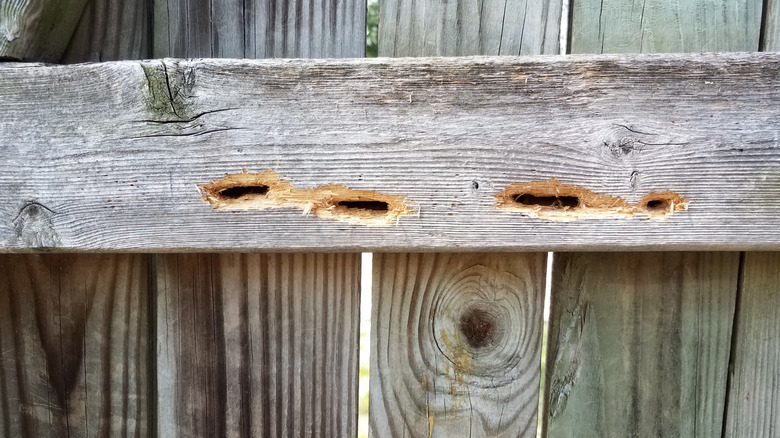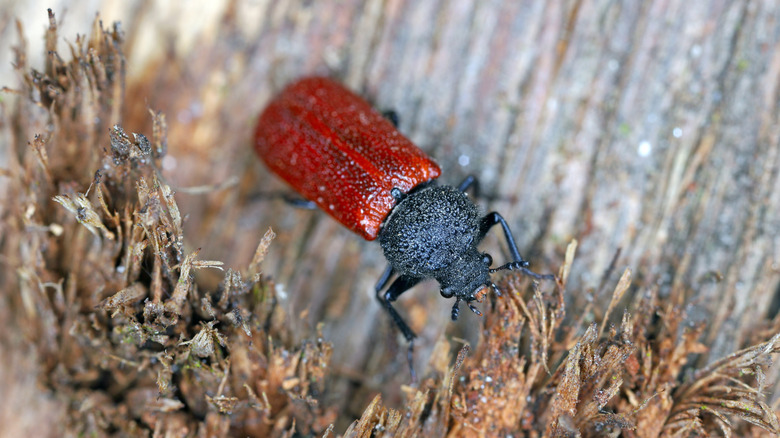What It Means If You Find Small Holes In Your Fence
While wooden fences are an enduringly popular choice for U.S. homeowners, they're far from worry free. You have to regularly update the finish, be it stain or paint, and check the structural integrity of the timber. A vital part of wooden fence maintenance tips for keeping it pristine year-round is perusing the planks for small holes that could be indicative of far larger problems. An invasion of hungry or nest-seeking insects is probably the number one hole-making concern for wooden fence owners, followed by some equally distressing, though less common problems involving foe of the feathered kind, one of lumber's natural attributes, and the weather.
Carpenter bees, found across the U.S., are the most common cause of small fence holes. They leave half-inch diameter holes (their nests), sometimes with yellow staining and frass (sawdust) below, in wood. In most cases, these beneficial native insects create so little damage, no treatment is needed — you want to bring more pollinators into your yard and garden, right? They prefer soft tree species like pine, cedar, and redwood sans surface treatment, so making sure your fence stays well painted or stained is preventative. Alternatively, pipe wood putty or caulk or insert small pieces of dowel into the holes in the late summer when the offspring have flown the coop. You could also replace the damaged boards, placing the old ones in your garden to attract bees there instead. Chemical controls, like insecticidal dust, are a last resort and should be applied in summer or early spring to avoid nesting season.
Beyond carpenter bees: More insects and other hole-causing culprits
Carpenters bees aren't the only insects wood fence owners deal with. Powderpost beetles (a name that encompasses dozens of species) create truly teeny holes, measuring about 1/32 of an inch to 1/16 of an inch. Like with carpenter bees, prevent infestations by painting or staining the fence. If things get out of hand, replace the affected panels. Where these beetles eat wood, carpenter ants burrow into fences to create nests. Drywood termites do both. Their holes resemble a collection of long channels with frass and dead insects nearby. Both carpenter ants and termites cause serious damage if their colonies are left unchecked. The best ways to keep termites from munching on your wooden fence — and carpenter ants, for that matter — is by identifying and exterminating the nest.
You could also be dealing with woodpeckers. They're attracted to the insects that live in your wooden fence and will drill at holes in the planks to grab a snack. Replace insect-damaged planks and posts with new, treated wood, and give the old ones to your feathered visitors as a decoy. They sometimes also drill small holes at mating season to create noise. Use humane bird deterrents to keep them away. A knot might have popped out of a plank. Weathering — erosion, decay, or rot — can also produce holes in a fence over time. In all these cases, one-off and small holes can be patched with wood putty or wood filler and some sanding.

